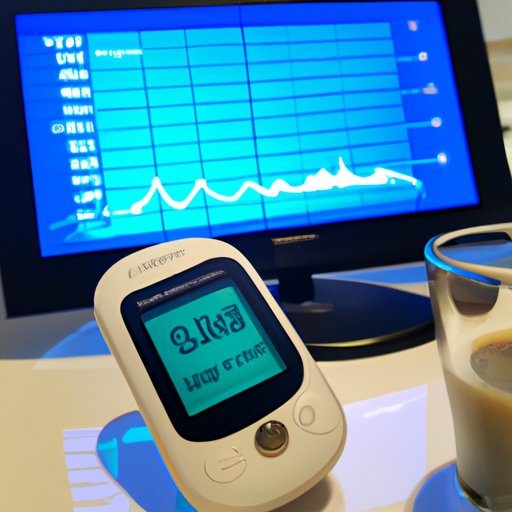Introduction
A liquid diet is a type of diet that restricts a person’s food intake to only liquids. It is often used for medical reasons, such as after surgery or when a person has difficulty swallowing solid food. It can also be used as a way to lose weight quickly, although this should be done with caution and under the supervision of a doctor.
There are potential benefits and risks associated with a liquid diet. Some of the potential benefits may include weight loss, improved digestion and better nutrient absorption. However, there are also potential risks, such as dehydration, vitamin and mineral deficiencies, and an increased risk of developing gallstones.
Types of Liquid Diets
There are three main types of liquid diets: clear liquid diet, full liquid diet, and modified liquid diet. Each type has different restrictions and is usually used for different purposes.
Clear Liquid Diet
A clear liquid diet consists of clear liquids, such as water, tea, coffee, broth, and certain juices. This type of diet is typically used before surgery or diagnostic tests, as it helps to clear the digestive system. According to a study conducted by the American Society for Gastrointestinal Endoscopy, “clear liquid diets improve visualization during endoscopic procedures.”
Full Liquid Diet
A full liquid diet includes all clear liquids plus foods that are liquid at room temperature, such as ice cream, custards, strained soups, puddings, and milkshakes. This type of diet is typically used after surgery or for people who have difficulty digesting solid food. A full liquid diet can provide adequate calories and nutrients for most people.
Modified Liquid Diet
A modified liquid diet includes all clear liquids and some solid foods that have been pureed or blended. This type of diet is typically used for people who are unable to eat solid food but still need more calories and nutrients than what a clear liquid diet can provide. Examples of foods that can be included in a modified liquid diet are mashed potatoes, cooked cereal, strained meat, and soft fruits and vegetables.
Consulting a Doctor
It is important to consult with a doctor before starting a liquid diet. A doctor can help determine the best type of liquid diet for an individual’s needs and advise on any potential risks or complications that may arise from following a liquid diet. They can also provide guidance on how to ensure that the diet provides enough calories and nutrients.

Preparing a Liquid Diet Plan
Once a person has consulted with their doctor and determined which type of liquid diet is right for them, they can begin preparing a liquid diet plan. Here is a step-by-step guide for preparing a liquid diet plan:
- Determine the type of liquid diet that is right for you.
- Calculate your daily calorie needs.
- Choose healthy and nutritious liquids to include in your diet.
- Create a meal plan based on your calorie needs.
- Keep track of what you eat and drink each day.
- Check in with your doctor regularly to monitor your progress.
Making a Liquid Diet More Enjoyable and Sustainable
Following a liquid diet can be difficult, so it is important to make it enjoyable and sustainable. Here are some tips for making a liquid diet more enjoyable and sustainable:
- Choose nutrient-rich liquids, such as smoothies made with fresh fruits and vegetables.
- Include protein shakes or other protein-rich drinks in your meal plan.
- Experiment with different flavors and combinations of liquids.
- Drink plenty of water throughout the day.
- Eat small snacks if needed to prevent feeling overly hungry.
- Allow yourself to enjoy occasional treats, such as a scoop of ice cream or a milkshake.

Monitoring Health While on a Liquid Diet
It is important to monitor one’s health while on a liquid diet. A doctor should be consulted regularly to monitor weight, blood pressure, and other vital signs. Additionally, it is important to pay attention to signs of dehydration, fatigue, and changes in mood. If any of these signs are present, it may be necessary to adjust the diet plan.
Conclusion
Doing a liquid diet can have potential benefits and risks, so it is important to consult with a doctor before starting one. There are three main types of liquid diets: clear liquid diet, full liquid diet, and modified liquid diet. Preparing a liquid diet plan and making it enjoyable and sustainable can help ensure success. It is also important to monitor one’s health while on a liquid diet to ensure that the diet is providing enough calories and nutrients.
Following a liquid diet can be challenging, but it can also be beneficial for those looking to lose weight or improve their overall health. With the right approach and support, a liquid diet can be a safe and effective way to achieve one’s health goals.
(Note: Is this article not meeting your expectations? Do you have knowledge or insights to share? Unlock new opportunities and expand your reach by joining our authors team. Click Registration to join us and share your expertise with our readers.)
